The Carnegie-Vincent Library
Introduction
Text-to-speech Audio
The original Carnegie Library was made possible by Andrew Carnegie, who put forward a twenty thousand dollar matching opportunity to Darwin R. James and O.O. Howard. Thirteen donors matched the offer, and in 1906 the library became the second building on campus to be constructed after the establishment of LMU (Avery Hall being the first).
Images
The Carnegie Vincent Library as it appears today.

Carnegie Vincent Library as it appeared when first constructed.
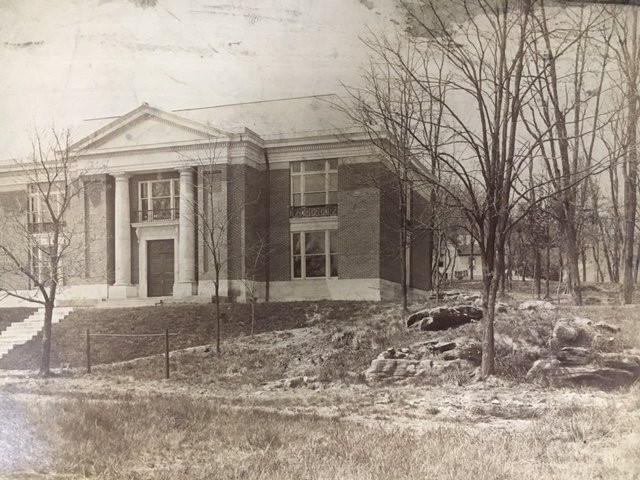
LMU students posed in front of the Carnegie Vincent Library when it was first constructed.
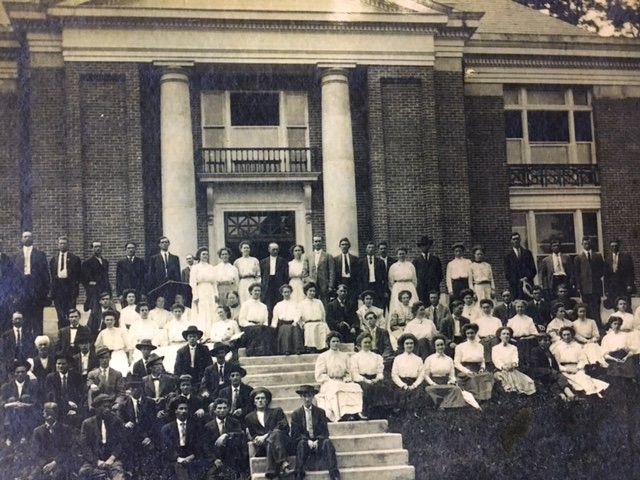
The Carnegie Vincent Library as it appeared in the 1950s.
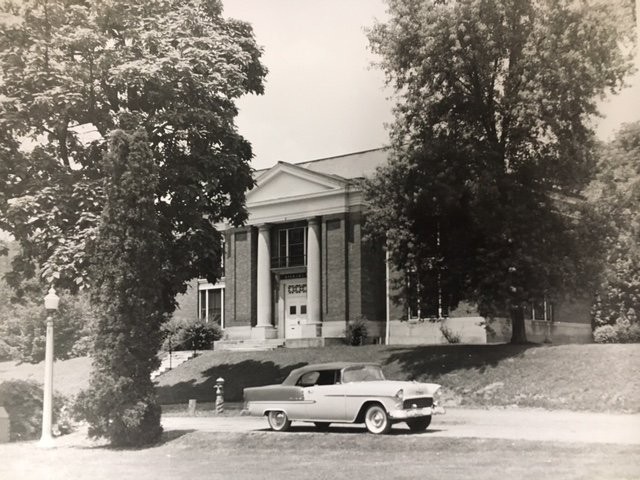
The interior of the Carnegie Vincent Library in the 1950s.
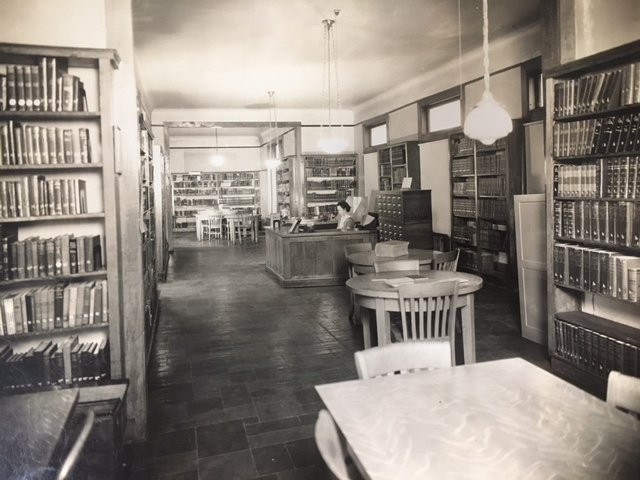
Construction of a new wing, the Burt Vincent Memorial Library, was added to the Carnegie Library in 1973, making it the Carnegie-Vincent Library.
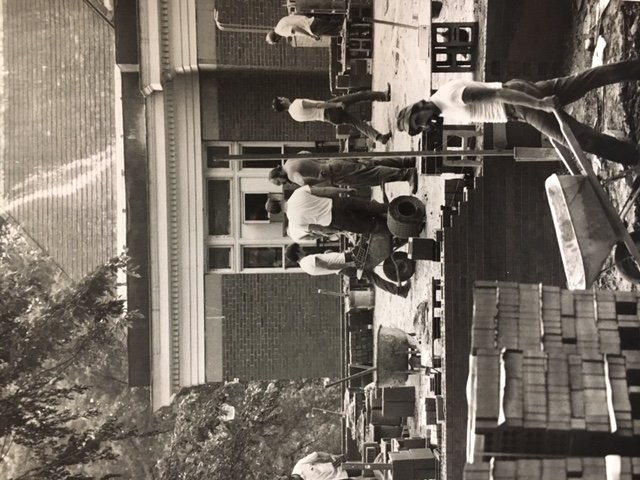
Backstory and Context
Text-to-speech Audio
Made in the Italianate Georgian style, the Carnegie Library is similar to the over 1,000 other Carnegie libraries that was constructed in the same forty-year period. The following is a 1932 description of the building that appeared in the LMU publication The Blue and the Grey:
What does the library mean to the students of LMU? Better say - how much the library can mean to the students of Lincoln Memorial University.
Down stairs between the offices are shelves and shelves of books that are seldom noticed. There are old fiction books, poetry, history, geography, philosophy, and foreign language. Valuable - several thousand volumes. And in the Recreational Reading Room are all the fiction works. These books may be checked out for one week. There are always a number of interesting books on the display table. Along side the walls are low shelves on which are many valuable magazines - writers, mechanical, scientific, educational, dramatic, medical, musical and the entertaining kind. There are a number of daily papers, weekly papers, and county papers available at all times in the Reading Room.
Downstairs and just outside the librarian's office are reserved books and manuscripts about Lincoln's life. Just at the top of the stairs, in glass cases, are displayed many relics of Lincoln's time - Confederate money, swords, knives, caps, and guns. These are rightfully of interest to everyone who comes to our library.
Upstairs in the "business end" of the library. Here are the books on psychology, Bible, economics, agriculture, home economics, English and composition, drama, writing, American literature, English literature, philosophy, foreign language, travel, biography and history. Upstairs are the reference books, reader's guides, an encyclopedias. Dr. Hill has presented the Library the latest edition of the Britannica Encyclopedia. On the reserve shelves are several hundred books selected by the professors for use in their particular classes. These books may be checked out for overnight use only.
On the display table, upstairs, are books for recreational study. These were presented by Judge Grossman of New York City.l The books have subject matter ranging from "Once There Was and Was Not" to "The Seven Seals of Science." Other new books are available on the table beside the U-desk.
In the magazine room are filed those magazines worthy of preservation or those likely to be needed for reference work. Students are urged to make use of these magazines. Just ask the librarian at the desk for the magazine you want - be sure of the number or date. Many of the periodicals most in use have been bound and are on the shelves - these are considered as reserve books, but may not be taken from the library.
On the bulletin board downstairs, the librarian posts from time to time; book reviews, biographical sketches, book covers, suggested reading courses, and book lists. All of these are valuable to the student. The bulletin board should receive the daily attention of everyone.
Sources
Hess, Earl. Lincoln Memorial University and the Shaping of Appalachia. Knoxville, TN: University of Tennessee Press, 2011.
Page, Bonnie and Cindy Stephenson. Lincoln Memorial University (Memories and More). Harrogate, Tennessee: PrintOne, 2001.
Sweet, Natalie. Images of America: Harrogate and Cumberland Gap. Charleston, South Carolina. Arcadia Publishing, 2014.
Suppiger, Joseph E. Phoenix of the Mountains: The Story of Lincoln Memorial University. Harrogate, TN: Lincoln Memorial University Press, 2001 (originally published in 1977).
Page, Bonnie and Cindy Stephenson. Lincoln Memorial University (Memories and More). Harrogate, Tennessee: PrintOne, 2001.
Sweet, Natalie. Images of America: Harrogate and Cumberland Gap. Charleston, South Carolina. Arcadia Publishing, 2014.
Suppiger, Joseph E. Phoenix of the Mountains: The Story of Lincoln Memorial University. Harrogate, TN: Lincoln Memorial University Press, 2001 (originally published in 1977).
